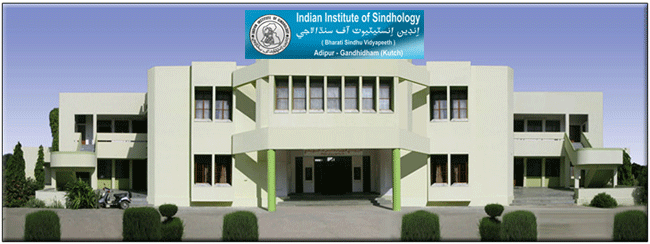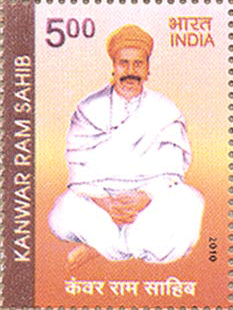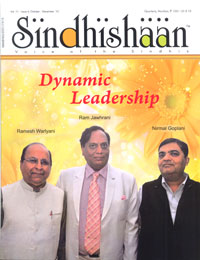The New Sindhis
By Shefalee Vasudev
What mental cues do most people associate with Sindhis? It's either a comical sidekick in a film, a smarmy merchant type or girls in mini skirts and designer bags whose filthy rich fathers run business empires in “Bambai” and Dubai. If the Sindhi stereotypes still prevail or if Sindhi curry and papad is all there is to know about the community’s cuisine, there’s good reason. Being rendered stateless after Partition also led to Indian Sindhis becoming somewhat rootless. But the younger generation wants to change that, without wearing lament on their lapel. Meet the new Sindhis.
Hanee Tindwani, 31, gave up her job as a radio jockey to become a teacher at the Vision Sindhu Children Academy in Ahmedabad, where Sindhi culture is being resurrected. Or take celebrated folk singer Dushyant Ahuja. He consciously steers clear of mass entertainment and sings Sindhi ghazals and folk songs for select audiences in India and abroad to draw attention to the poetic heritage of his community. Writer Vimmi Sadarangani, a Jaipur Literature Festival regular and historian Nandita Bhavnani, who does research on the Sindhi cultural connection between Pakistan and India, are both prominent names among the new Sindhis.
Their work is of prime importance for the simple reason that the Sindhi identity is in a curious cultural churn at the moment. Urged by progressive older writers and cultural experts, younger Sindhis are re-looking at themselves. It may not be an organised movement, yet it is palpable and visible. Unlike their parents, who still nurse the scars of refugee life in India after Partition, the calling cards of these new Sindhis are not branded with “loss”. They work towards rediscovering their lapsed identity through academic and literary research and cultural strategies – dance, theatre and language workshops, radio and TV shows or making community directories, while tracing back family histories. Some record and release music CDs, others make telefilms or create Sindhi websites which include ringtones, recipes, etc. They haven’t forgotten that the tragic losses of Partition made lament the primary motif of all post-Partition Sindhi literature and art. But they are equally conscious that inside a globalised India, change, if any, can be wrought through action, not emotional politics.
Hanee performs on radio and TV, teaches Sindhi language, dance, and drama to children and adolescents and travels across the country — even outside, to Dubai which has a large Sindhi population — to stage plays. One of her sell-out performances is a solo act in The Autobiography of Sindhi Language, a dramatic monologue based on eminent scholar Dr Satish Rohra’s book by the same name. On the other hand, Nandita Bhavnani, 44, who was raised as a typical south Mumbai elitist kid and couldn’t read, write or fluently speak in her mother tongue, became a Sindhi historian by choice. She learnt the Persian script and worked with social anthropologist Ashis Nandy for research on “Partition Psychosis” (soon to come out as a book). She has travelled many times to Pakistan to explore Sindhi culture there and her research from both sides of the border has been documented in books and articles. “There seems to be a small but increasing number of young Sindhis now taking an interest in their parents’ past and community. I have met several young Sindhis who tell that they would love to travel to Sindh, to see where their parents were born and lived. There is also an increasing number of young Sindhi women who have been researching and writing about their community or who want to make documentaries on Sindhis,” says Bhavnani.
Like Vimmi Sadarangani, associate professor in the department of Sindhi at Tolani College of Arts and Science in Gandhidham, the only college in the country, where Sindhi is taught as a subsidiary subject. “The prescribed textbooks are in Persian script, but as no Sindhi student knows how to read the script, I translate studies from the syllabus into Devnagiri to help them,” says Sadarangani, author of a dozen books.
Then there is the Sindhi Sangat – a network of Sindhis in Mumbai and Dubai is urging community members from across the world to send five lakh postcards to the PMO asking for a 24-hour Sindhi channel on Doordarshan to help preserve the language for the new generation.

The only Indian Institute of Sindhology, set up in 1989 in Gandhidham in Kutch, acts as a nucleus of art, culture, literature and language and now boasts of a unique library with rare books, manuscripts and music from the past 100 years and more. “We even have a restored version of Shah Jo Rasalo, (treated as the Sindhi bible written by poet saint Shah Abdul Latif), a book that was first published in 1866 in Germany,” says Lakhmi Khilani, a veteran Sindhi writer and editor of Sindhi magazine Rachna. Khilani stresses that there is a renewed interest in Sindhi among the new generation.
The Sindhology Institute which has on its board eminent Sindhi literateurs and artists, is the only place where a scholar can manage a fully guided Phd in Sindhi. It has proposed an open international university, The Bharati Sindhu Vidyapeeth, and intends to record all new plays and writing in a trilingual format – Hindi-Sindhi-English, for multi-cultural accessibility. As if in resonance, from this year the Sahitya Akademi has announced an annual translation award in literature.
An unexpected researcher who travelled to the Sindhology Institute last year is Kaumudi Marathe, a Los Angeles-based journalist and chef who runs a catering company and cooking school called Un-Curry to dispel the myth that all Indian food is curry. To research a story on Sindhi food for an American magazine, she travelled to Gandhidham to meet women in Sindhi households to document forgotten recipes. Marathe is married to a Sindhi from Mumbai for the last 20 years and the warm relationship with her husband’s parents motivated her to learn Sindhi. “I also cook Sindhi food and often speak in Sindhi to my husband so that our daughter hears the sounds of the language, much to the delight and pride of my mother-in-law,” says Marathe.
Food is a strong connect even for those who have been raised without much cultural awareness. Ask Bollywood director Rohan Sippy. “My Sindhi genes kick off massively when it comes to food. The other day, I went to a place in Essel Studios where you get awesome dal pakwaan,” says Sippy. Actor Shatrughan Sinha's children Sonakshi, Luv and Kush who have a Sindhi mother, not only know about the culture of the Indus Valley civilisation and why Sindhis worship Jhulelal (the water god) but all three love Sindhi food. Sindhi cuisine finds ample ripples in Bollywood — Ekta and Tusshar Kapoor, Kareena and Karisma Kapoor and Karan Johar — all have Sindhi mothers. Mumbai-based writer Sherina Advani who wrote a nostalgic piece on Sindhi food in the recent book Sindh: Past Glory, Present Nostalgia believes that food will survive beyond all other cultural facets of the community. She feels that in their own way, the odd few Sindhi restaurants such as Kailash Parbat, Tharus, Jhamas and Guru Kripa in Mumbai help the cultural heritage.

Largely ignored by politicians despite BJP leader L K Advani’s presence in influential corridors of power, Sindhis now seem to be getting political attention. In April 2010, President Pratibha Patil released a postal stamp of Kanwar Ram Sahib, an artist-singer. Last month, to coincide with Cheti Chand, the Sindhi New Year, Gujarat Chief Minister Narendra Modi announced a 100-crore project to build a Jhulelal temple in Narayan Sarovar in Kutch. Kutch is not just across the border from Pakistan but this is where the Sindhu river flowed through the Kori creek till it geologically altered its course. Significantly, it was the then Maharao of Kutch who gave the land of Gandhidham and Adipur, now known as the new Sindh, to visionary Bhai Pratap Dialdas to build the Sindhu Resettlement Corporation and resettle migrant Sindhis after Partition. Gandhidham is now the only town in India where Sindhi culture is visible — here even resident Gujaratis speak Sindhi and dance to the lilting laado — traditional Sindhi wedding sangeet sung to a dholak, which is played with a steel spoon.
Yet, reviving the culture will be an uphill climb. Sindhi is the only constitutionally recognised Indian language without a region. Unlike other communities who choose to converse in their mother tongue, Sindhis speak in English or Hindi even among themselves. Fashion designer Tarun Tahiliani, who grew up in an elitist south Mumbai household, agrees. “I regret that we were brought up in a Westernised way,” says Tahiliani who speaks Sindhi but haltingly. “I do know about foods and some Sindhi customs but since I lost my mother when I was young, the family couldn’t hold on to them,” he says. Which is why ghazal singer Dushyant Ahuja says it is important to avoid caricaturist notions of the Sindhi identity. “Re-mixed Jhulelal bhajans as music, wearing ajrakh and Sindhi topi as ethnic symbols, or labelling cheap comedies as literature could endanger this movement. We need to be culturally authentic instead of gimmicky,” he says.
Rohan Sippy has an insightful parting shot. “Since we don’t have a region, the new Sindhi identity is the spirit of entrepreneurship. It is about resilience and an optimism to survive anywhere.”
With inputs from Priyanka Pereira and Harneet Singh


